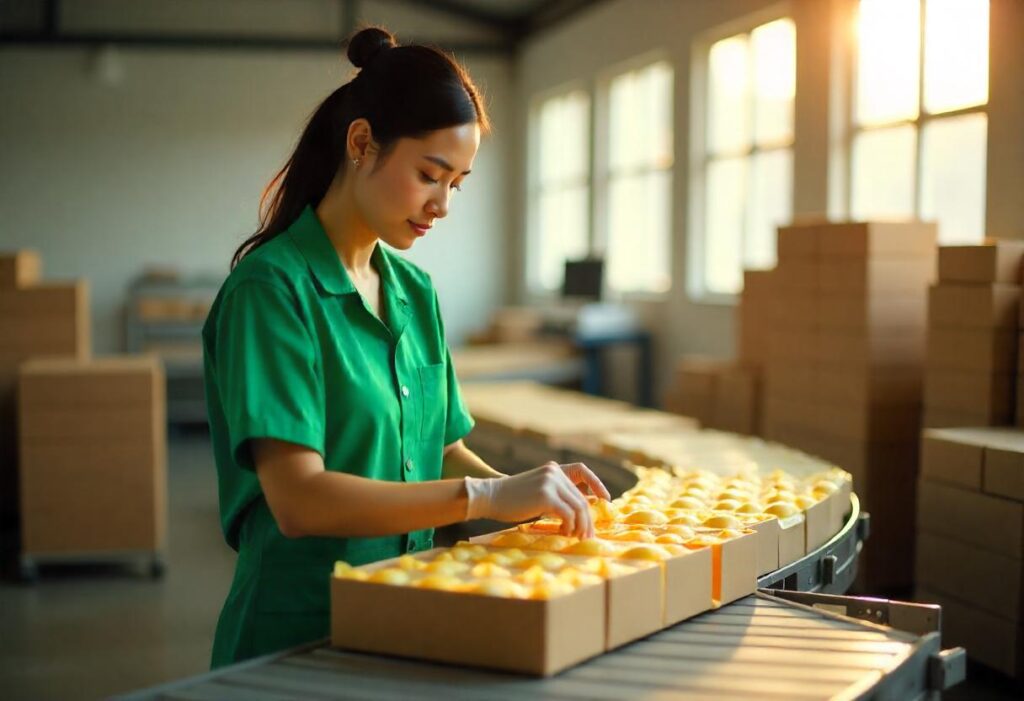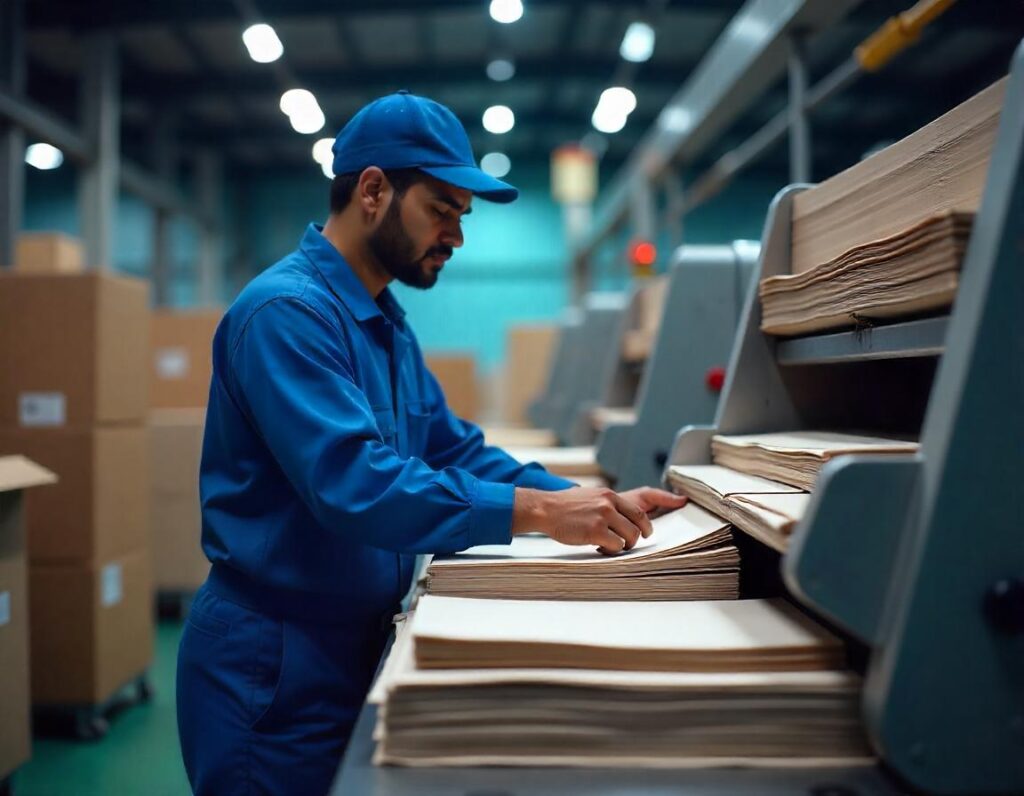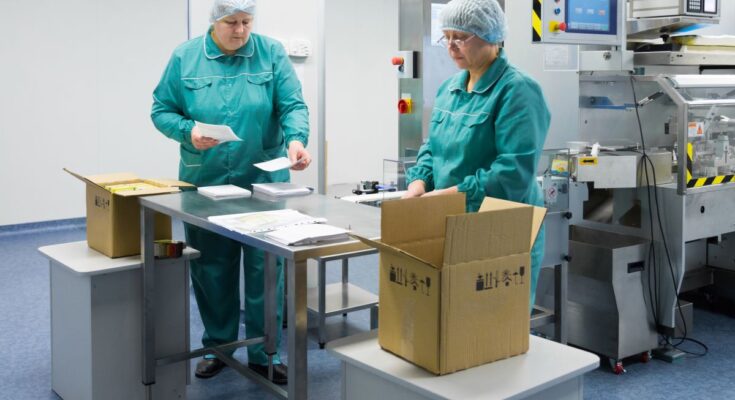Are you tired of contributing to the mounting plastic waste crisis every time you buy a product? With environmental concerns at an all-time high, consumers are increasingly seeking eco-friendly alternatives in every aspect of their lives – including packaging. But with so many options available, how do you know which eco-friendly packaging solution is truly the best choice?
Selecting the right eco-friendly packaging isn’t just about picking the most biodegradable material. It’s a complex decision that involves balancing sustainability, functionality, and cost-effectiveness. From the raw materials used to the production process and even regulatory compliance, there are numerous factors to consider. But don’t worry – we’ve got you covered!
In this blog post, we’ll dive into the 5 Essential Factors for Choosing Eco-Friendly Packaging. We’ll explore everything from material sustainability to production efficiency, ensuring your packaging choices not only protect your products but also our planet. Let’s unpack the world of green packaging and empower you to make informed, environmentally conscious decisions! 🌱📦
Material Sustainability
Biodegradable options
When selecting eco-friendly packaging, biodegradable options stand out as a top choice. These materials break down naturally over time, reducing long-term environmental impact. Popular biodegradable packaging materials include:
- Cornstarch-based plastics
- Mushroom packaging
- Seaweed-based materials
- Palm leaf containers
Recyclable materials
Recyclable packaging offers another sustainable solution. These materials can be processed and reused, reducing waste and conserving resources. Common recyclable packaging options include:
| Material | Recyclability | Common Uses |
|---|---|---|
| Glass | Highly recyclable | Bottles, jars |
| Aluminum | Infinitely recyclable | Cans, foil |
| Paper | Easily recycled | Boxes, bags |
| PET plastic | Widely recyclable | Bottles, containers |
Renewable resources
Packaging made from renewable resources helps conserve non-renewable materials and promotes sustainability. Examples include:
- Bamboo packaging
- Cotton bags
- Wood-based materials
- Hemp-derived products
Minimal environmental impact
To truly choose sustainable food packaging, consider the overall environmental impact. Look for materials that:
- Require less energy to produce
- Generate minimal waste during manufacturing
- Have a low carbon footprint in transportation
- Do not release harmful chemicals when disposed of
By prioritizing these factors, you can select packaging that aligns with eco-friendly principles and contributes to a more sustainable future. As we explore the next section, we’ll delve into how the production process efficiency further influences the environmental impact of packaging choices.
Production Process Efficiency
Energy consumption
When evaluating eco-friendly packaging options, energy consumption during the production process is a crucial factor to consider. Manufacturers are increasingly adopting energy-efficient technologies and renewable energy sources to minimize their environmental impact.
Energy-efficient production methods:
- LED lighting in manufacturing facilities
- High-efficiency motors and equipment
- Heat recovery systems
- Smart energy management systems
| Energy Source | Environmental Impact | Cost-Effectiveness |
|---|---|---|
| Solar | Low | High |
| Wind | Low | Medium |
| Natural Gas | Medium | High |
| Coal | High | Low |
Water usage
Water conservation in packaging production is essential for sustainability. Companies are implementing innovative water-saving techniques and closed-loop systems to reduce their water footprint.
Water-saving strategies:
- Rainwater harvesting
- Wastewater treatment and reuse
- Drought-resistant landscaping
- Low-flow fixtures and equipment
Waste reduction
Minimizing waste during the production process is key to creating truly eco-friendly packaging. Manufacturers are adopting circular economy principles to maximize resource efficiency and reduce landfill waste.
Waste reduction techniques:
- Recycling and upcycling of production scraps
- Lean manufacturing practices
- Precision cutting and molding technologies
- Biodegradable packaging materials
Carbon footprint
The overall carbon footprint of the production process is a critical consideration when choosing eco-friendly packaging. Companies are implementing various strategies to reduce greenhouse gas emissions throughout their supply chains.
Now that we’ve explored the importance of production process efficiency, let’s examine how functionality and protection play a role in selecting sustainable packaging options.
Functionality and Protection

A. Product preservation
When selecting eco-friendly packaging, product preservation is paramount. Sustainable packaging must effectively protect food items from contamination, moisture, and oxidation. Here’s a comparison of different eco-friendly materials and their preservation capabilities:
| Material | Moisture Resistance | Oxygen Barrier | Light Protection |
|---|---|---|---|
| Bio-based plastics | Good | Moderate | Poor to Moderate |
| Recycled paper | Poor | Poor | Good |
| Glass | Excellent | Excellent | Excellent |
| Aluminum | Excellent | Excellent | Excellent |
B. Durability during transportation
Eco-friendly packaging must withstand the rigors of shipping and handling. Consider these factors for durable sustainable packaging:
- Shock absorption
- Stackability
- Resistance to crushing
- Weather resistance
C. Shelf life extension
Extending product shelf life is crucial for reducing food waste. Sustainable packaging can contribute to this by:
- Incorporating natural preservatives in the packaging material
- Using modified atmosphere packaging (MAP) techniques
- Implementing active packaging technologies, such as oxygen scavengers
D. Tamper-evident features
Eco-friendly packaging should also ensure product safety and integrity. Incorporate tamper-evident features like:
- Biodegradable seals
- Compostable shrink bands
- Sustainable security labels
By focusing on these aspects, you can choose sustainable food packaging that not only protects the environment but also maintains product quality and safety throughout its lifecycle.
Cost-effectiveness
A. Initial investment
When considering eco-friendly packaging, the initial investment can sometimes be higher than traditional options. However, it’s essential to look beyond the upfront costs and consider the long-term benefits. Here’s a breakdown of initial investment considerations:
- Research and development costs
- Machinery upgrades or replacements
- Staff training for new packaging processes
- Sourcing sustainable materials
| Investment Type | Traditional Packaging | Eco-Friendly Packaging |
|---|---|---|
| Material Costs | Lower upfront | Higher upfront |
| Equipment | Existing machinery | Potential upgrades |
| Training | Minimal | More extensive |
B. Long-term savings
Despite higher initial costs, eco-friendly packaging often leads to significant long-term savings:
- Reduced waste disposal fees
- Lower transportation costs due to lighter materials
- Improved brand image leading to increased sales
- Potential tax incentives for sustainable practices
C. Consumer willingness to pay
Modern consumers are increasingly conscious of environmental issues and often willing to pay a premium for sustainable products:
- 73% of millennials are willing to pay more for sustainable goods
- Eco-friendly packaging can justify a 5-10% price increase
- Brands with sustainable packaging often see increased customer loyalty
By balancing initial investments with long-term savings and consumer preferences, businesses can make cost-effective decisions when choosing eco-friendly packaging. This approach not only benefits the environment but also contributes to a company’s financial health and market position. Next, we’ll explore the importance of regulatory compliance in sustainable packaging choices.
Regulatory Compliance
A. Local environmental laws
When selecting eco-friendly packaging, it’s crucial to consider local environmental laws. These regulations vary by region and can significantly impact your packaging choices. Here’s a quick overview of common local environmental laws:
- Waste management regulations
- Recycling mandates
- Plastic bag bans
- Extended Producer Responsibility (EPR) laws
| Law Type | Description | Example |
|---|---|---|
| Waste management | Guidelines for disposal | Mandatory composting |
| Recycling mandates | Required recycling rates | 50% recycling target |
| Plastic bag bans | Restrictions on single-use plastics | Complete ban on plastic bags |
| EPR laws | Producer responsibility for product lifecycle | Take-back programs |
B. Industry-specific standards
Different industries have unique packaging requirements. For food packaging, consider:
- FDA regulations for food-contact materials
- USDA organic standards for packaging
- HACCP guidelines for food safety
C. Eco-labeling requirements
Eco-labels provide consumers with information about the environmental impact of packaging. Key considerations include:
- Accurate claims to avoid greenwashing
- Proper use of recycling symbols
- Clear disposal instructions
D. Future legislation considerations
Staying ahead of upcoming regulations is essential. Keep an eye on:
- Proposed plastic reduction laws
- Circular economy initiatives
- Extended Producer Responsibility expansions
E. Third-party certifications
Third-party certifications can validate your eco-friendly packaging claims. Popular certifications include:
- Cradle to Cradle Certified
- Forest Stewardship Council (FSC)
- Biodegradable Products Institute (BPI)
These certifications offer credibility and can help differentiate your product in the market. When choosing sustainable food packaging, ensuring compliance with these regulatory aspects will help you navigate the complex landscape of eco-friendly packaging.

Selecting the right eco-friendly packaging is crucial for businesses aiming to reduce their environmental impact. By considering material sustainability, production process efficiency, functionality and protection, cost-effectiveness, and regulatory compliance, companies can make informed decisions that benefit both their bottom line and the planet. These five factors work together to create packaging solutions that are not only environmentally responsible but also practical and economically viable.
As consumers become increasingly eco-conscious, businesses that prioritize sustainable packaging will gain a competitive edge. By implementing these essential factors in their packaging decisions, companies can demonstrate their commitment to environmental stewardship while meeting the growing demand for green products. Take the first step towards a more sustainable future by evaluating your current packaging practices and exploring eco-friendly alternatives that align with these key considerations.



